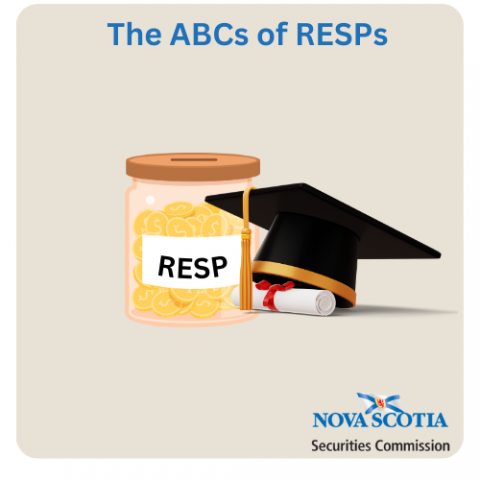Submitted by nsscadmin on

Classes are back in session for the new school year, and another class of high school seniors are a year away from college and university. After a house, post-secondary education can be one of the most expensive endeavours in a person’s life. The latest studies found the average cost of four-years at university in Canada in 2025 was over $75,000, and it will surpass the $100,000 mark in a few years. In some provinces and for some degrees, it already has.
To try and put a dent in that sizable cost many parents save and invest in a registered education savings plan (RESP). If you think an RESP may not be necessary, and you can simply save for college or university look at the math to see how hard that can be.
Most children head to university when they’re 18 years old. That means a parent has up to 18 years to save. If you saved $100 per month for 18 years, when your child was ready to begin university you would have $21,600 saved up. To save $100,000 in 18 years you would need to save $463 per month. If you were to contribute the same $100 per month to an RESP and receive an average annual return of 5% you would end up with $34,525, nearly $13,000 more than you would have by simply saving.
If those numbers pique your interest into opening an RESP for your current or future children, here’s some basic information you need to know.
An RESP is a tax deferred investment account used for post-secondary education. It can hold cash and investments. RESPs can be opened at most financial institutions including banks, credit unions, and investment firms.
There are no annual contribution limits for an RESP, but over the account’s lifetime the contribution limit is $50,000. You can contribute to an RESP for up to 31 years and leave it open for up to 35 years.
An RESP can be opened for an individual, or, if you have more than one child, as a family plan. You can also open an RESP through a scholarship plan dealer. These are companies that only offer RESPs and were covered thoroughly in a previous post.
One very important difference when it comes to scholarship plan dealers is that they also offer what are known as Group RESP plans. Each group plan is different and comes with its own set of rules and regulations. The plan’s rules and regulations must be outlined in a prospectus. You should always read and fully understand the prospectus before entering into an RESP group plan. When reading a scholarship plan’s prospectus make sure you know and understand:
- what your contributions are and when they’re due,
- what terms you must follow throughout the entire time you’re in the plan,
- any possible penalties or fees you could expect if you leave the plan early,
- how much and how often your child can take payments and which education programs are eligible.
One final and very important fact all investors need to know about group RESP plans. If you cancel your plan within the first few years of enrolling, you will get much less back than you put into the plan. Any sales charges you owe for enrolling in the plan are deducted from your initial payments. This means less of your initial money is being invested and cannot be returned to you if you leave the plan.
An RESP also gives you access to special government programs to increase your RESP contributions. These programs include the Canada Education Savings Grant and the Canada Learning Bond.
The Canada Education Savings Grant is available for RESPs where the beneficiaries are under the age of 17. It is a federally funded program that provides additional funds alongside your contributions to an RESP. Through the Canada Education Savings Grant, the government will match 20% of your first $2,500 contributed annually, up to $500. The maximum funds you can receive through the program is $7,200.
The Canada Learning Bond is available for children from low-income families. The Government of Canada contributes up to $2,000 to an RESP for an eligible child through this program. To find out if you are eligible and for more information on the program, visit this website.
Once the RESP beneficiary enrolls in a post-secondary institution the money in the RESP can be withdrawn to pay for school. The money in an RESP grows tax free. The contributions are not tax deductible, but the interest, gains and government contributions are taxable when withdrawn and must be declared on the beneficiary’s tax return. As most students have little income while in school, the RESP withdrawals generally have a low tax burden.
The Nova Scotia Securities Commission does not provide investment advice. We are not advising investors to invest in an RESP. We are providing information on RESPs for educational purposes to help investors make more informed investment decisions. Always assess your financial goals, risk tolerance, and time horizon before making any investment, including an investment in an RESP.
